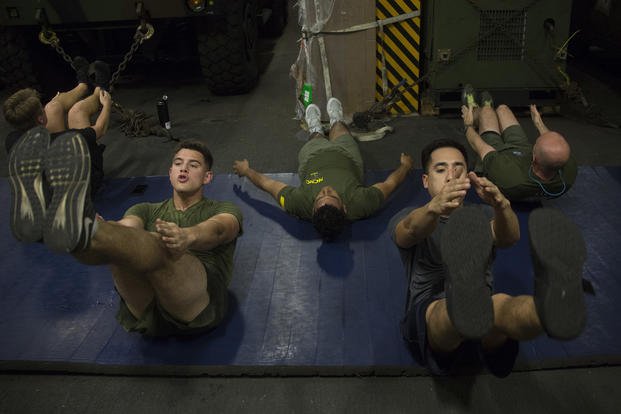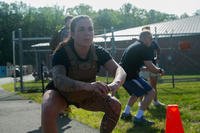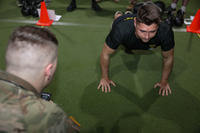Working out alone is tough for many of us. But for those who are self-motivated, these workouts are a great way to have some "me time" that can be quite therapeutic if you spend much of your day in large groups or stressful work or home environments.
But having a partner can be even more beneficial than that alone time. Even if you get a workout completed, having someone to push you and keep you company may increase your workout intensity and time significantly.
Is group training better for you? If you stink at self-motivation, you may find that setting a time with a partner or group training session in your day is all the extra boost you need to become consistent with training.
Here are some of the many group activities you can do with a workout partner or class-sized group at a gym:
Early Morning Fitness Boot Camps
There is nothing like waking up and getting your workout done first thing in the morning. Usually that time of the day has very little competition, other than a few more minutes of sleep. Compare that to the evening where family, work delays and emergencies pop up regularly.
Now, if you are prior military like many readers here on Military.com, the last thing you might want at the gym is some young, fit person yelling at you to keep moving. But some people like it, as it is a way to keep them accountable and moving even when they don't feel like it. A "boot-camp" style class also can help with that.
Just Your Normal Early Morning Workout
If you want to avoid the drill sergeant method of training, get up about 30-45 minutes early and hit the pavement, and do some PT or cardio machines with a neighbor or friend. It is a fact that having a partner on early morning workouts (or any time of day) makes it harder to hit the snooze button or miss that set time to train.
I run a 6 a.m. free training program where I live for men and women seeking to serve in the military, police and fire departments. It keeps me getting up six days a week, even when I do not feel like it. We hold each other accountable, and the motivation to train becomes a habit and disciplined activity.
The workout-of-the-week articles are great ideas for training and can be found at the Military fitness page.
More Traditional Training Options
Yoga class. Some prefer yoga several days a week. Some will take a day or two a week and break up a tough training week to recover and work on mobility and flexibility.
You can do yoga as a group to get your mind and body right for a day of stress at home or work. You also can do it at the end of the day and enjoy the de-stressing benefits after a typical day of life as an adult.
I currently do a yoga class one day a week, but I can tell as I age, I will add more yoga and swimming days into my week and taper the running and higher-repetition or heavier weight lifting a bit.
Pilates class. If you are not quite into yoga yet and like to mix in other movements and exercises, consider a Pilates class. Most of these classes are small and by appointment, so it gets put into your schedule as an appointment to keep.
Bike class or spinning. Get ready to work in a spin class. This is not your normal, casual bike ride in the neighborhood. Many gyms have spin classes while home stationary bikes such as Peloton are connected to spin classes you can join.
But if you like to bike or are trying to figure out some form of cardio other than running, consider a spin class and get on the gym's schedule to take these great workouts. You will find that you will push yourself more in a setting like this, compared to riding a stationary bike on your own.
Masters swim teams. Being able to swim is typically a requirement, but not necessarily. Most pools that have masters swim teams (adult swim club workouts) also will have lessons for people needing some help with their technique or confidence. These workouts are typically scalable and early as well, but some have evening workouts, too.
Personal training. All of the above likely have one-on-one options, which involves a monetary investment. People will put more effort into keeping appointments when the money already is spent. One-on-one training is more expensive but can be both a learning experience and a source of accountability.
Personalized training programs may be a great way to get started with learning the right techniques and training programs, then you can decide after your habit-forming education with a trainer if you want to do group training or train on your own.
Whatever you decide, blocking out that time every day is critical to building the consistency you need to make fitness a true lifestyle change and habit.
Stew Smith is a former Navy SEAL and fitness author certified as a Strength and Conditioning Specialist (CSCS) with the National Strength and Conditioning Association. Visit his Fitness eBook store if you’re looking to start a workout program to create a healthy lifestyle. Send your fitness questions to stew@stewsmith.com.
Want to Learn More About Military Life?
Whether you're thinking of joining the military, looking for fitness and basic training tips, or keeping up with military life and benefits, Military.com has you covered. Subscribe to Military.com to have military news, updates and resources delivered directly to your inbox.
















